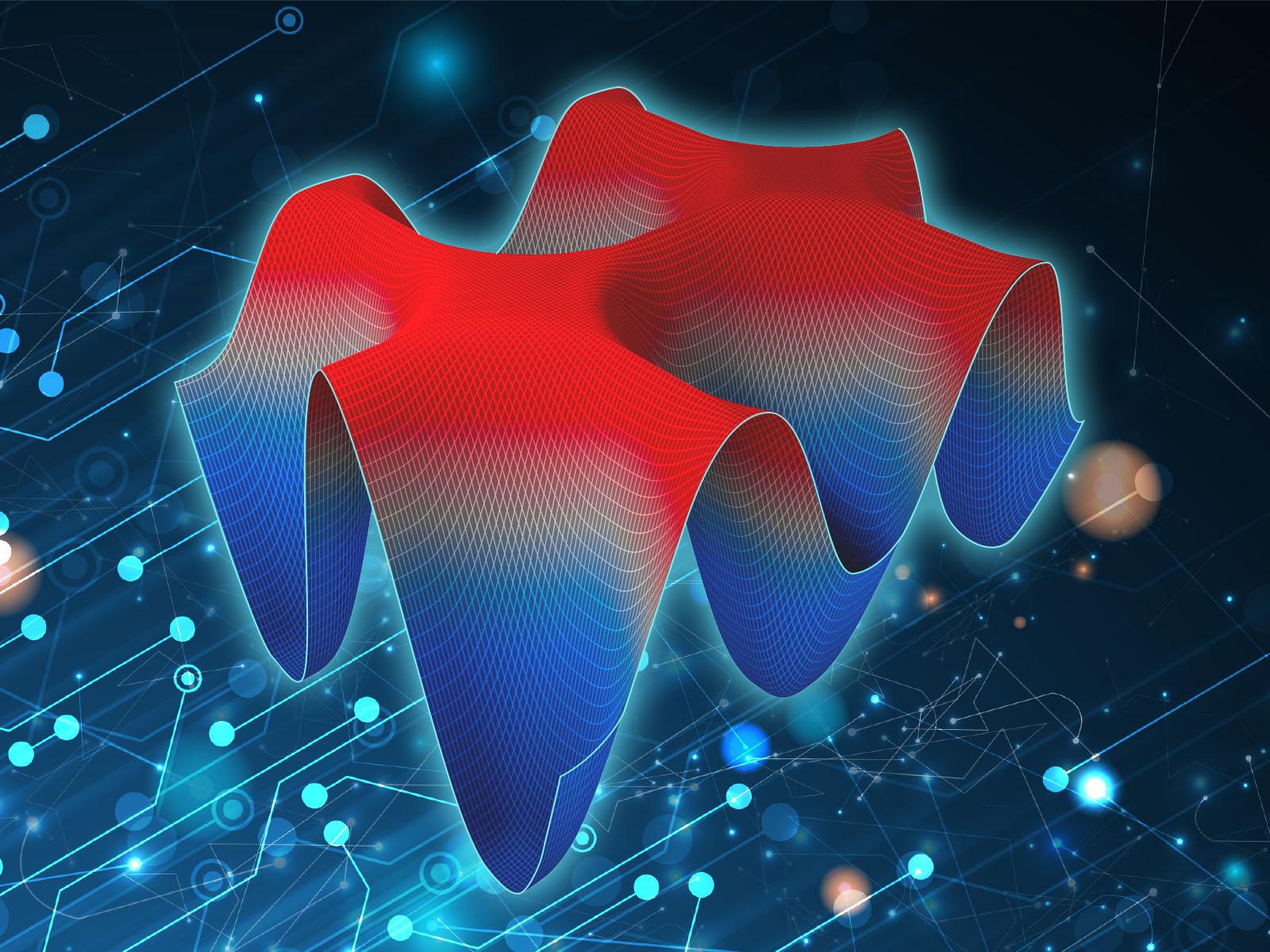Unleashing Quantum Computing for Quantum Chemistry from Constrained Optimization
Developing a new scheme to more efficiently solve quantum chemistry problems

A new approach to representing the fundamental wave functions in quantum systems produces more accurate results for quantum chemical simulations.
(Image by Nathan Johnson | Pacific Northwest National Laboratory)
The Science
To solve quantum chemical problems, scientists need to develop effective computational approaches to use quantum tools. Despite the promise of hybrid quantum-classical approaches, they often impose constraints that cause barren plateaus and inexact representations. Inspired by the generator coordinate method (GCM), researchers developed an approach to designing a dynamic subspace to effectively represent the states of complex quantum chemical systems. They found that using an adaptive GCM inspired approach, ADAPT-GCIM, produced solutions with balanced accuracy and efficiency in hybrid quantum-classical chemical simulations.
The Impact
Accurately obtaining ground and excited state energies is essential for comprehending diverse physical phenomena in molecules and materials. Increasingly complex systems require new approaches to solve with practical amounts of time and computing power. The insight and development from this work is particularly important to cost-effectively representing strongly correlated quantum chemical systems, setting the stage for more advanced quantum simulations of chemistry. These computations can expand the types of questions that quantum chemical simulations can answer.
Summary
Hybrid quantum-classical approaches may help solve quantum chemistry problems, but they introduce different challenges that need to be overcome. Conventional approaches can require significant optimization, requiring additional time and resources to reach a solution. On the other hand, the GCM circumvents the challenges of highly nonlinear parametrization in constructing target functions and provides an efficient framework for extending the probed subspaces on which these functions are built. The GCM has been a pioneering approach in nuclear physics, serving as a bridge between independent particle models and theories describing collective phenomena. It has been particularly important for modeling nuclear deformation and reaction dynamics. Researchers explored a GCM-inspired approach to represent the fundamental wave functions in quantum systems. The approach led to stronger lower bounds on system energy, providing more accurate results than the more conventional approaches. The precision from the process is well suited to solving complex quantum chemical problems. For less intricate problems, integrating the approach and an adaptive scheme can create a process that balances solution accuracy and process efficiency. This overall approach may point to alternative strategies for computing different quantum chemical states and broaden the possibility of more quantum chemistry simulations.
Contact
Bo Peng, Pacific Northwest National Laboratory, peng398@pnnl.gov
Funding
M. Z., B. P. and K. K. were supported by the “Embedding QC into Many-body Frameworks for Strongly Correlated Molecular and Materials Systems” project, which is funded by the Department of Energy (DOE), Office of Science, Basic Energy Sciences program (BES), the Division of Chemical Sciences, Geosciences, and Biosciences under FWP 72689. A. L. was supported by the DOE, Office of Science, National Quantum Information Science Research Centers, Quantum Science Center. X. Y. was supported by National Science Foundation CAREER DMS- 2143915. M. Z. and X. Y. both also were supported by Defense Advanced Research Projects Agency as part of the project W911NF2010022: The Quantum Computing Revolution and Optimization: Challenges and Opportunities. This research used resources of the Oak Ridge Leadership Computing Facility, which is a DOE Office of Science user facility supported under Contract DE-AC05-00OR22725. The Pacific Northwest National Laboratory is operated by Battelle for DOE under Contract DE-AC05-76RL01830
Published: May 23, 2025
Zheng, M.; Peng, B.; Li, A.; Yang, X.; Kowalski, K. 2024. “Unleashed from Constrained Optimization: Quantum Computing for Quantum Chemistry Employing Generator Coordinate Method,” npj Quantum Information. 10, 127. DOI: 10.1038/s41534-024-00916-8